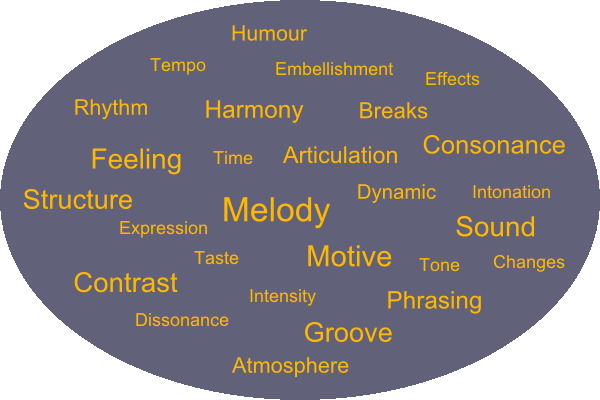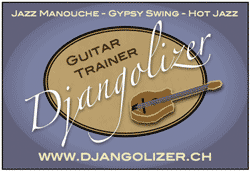
2 - The elements of music
Music is a composition of many different elements. They are always part of the music, but sometimes more present and sometimes less, depending on the style of music, the song and the musician.It could be a meditative exercise, to listen to a song and to try to realize his different aspects and elements.

(Of course, there exist many more elements of music, than mentioned in this graphic chart)
When you make music, you use some of these elements, consciously or unconsciously.
To integrate all the aspects of music in your improvisation, you have to deal with all of these elements sooner or later.
You could, for example, set your focus on one element for one week, trying to integrate it in your music and interpretation.
We can reduce these elements in two common denominators.
- What to play
- How to play it
In the next tables, we seperate the elements into these two aspects.
What?
HarmonyMelody
Rhythm
Consonance
Dissonance
Motive
How?
TempoFeeling
Phrasing
Expression
Sound
Tone
Embellishment
Dynamic
Structure
Contrast
Intensity
Groove
Effects
Time
Humour
Atmosphere
Intonation
Articulation
Changes
Taste
Breaks
What notes can you play?
What is the vocabulary of a Gypsy Jazz musician?The pool is a mixture of …
- Chromatic notes- Arpeggios
- Scales
- Chords
Djangolizer will show you exactly, what notes you can play over the chords and harmony. It will give you all the basis you need.
How you could play these notes
It will be your personal choice, how you play these notes. It has
to do with your feelings you have right at this moment. You probably
need a good teacher, who helps you, how to interpretate your feelings
on your instrument. Watch and listen intensive to yourself, while you
are making music.The king of soulful music is the Blues. Learn and practice Blues first, if you want to express yourself honestly.
Django definitely had the Blues!
It is also a good exercise, to listen to the themes and solos of your favourite musician and to try to copy it as exactly as possible. Sometimes you have to repeat a short phrase a tousand times, to get the right feeling for it, but I'm sure, it's worth it.
Record yourself and then listen carefuly to it. You will have more distance to your playing and so you can observe it more neutral. Check, if you groove, if your solo has a flow and if you tell a story or just play anything for the reason of playing.
Sometimes, less is more. Make breaks, to give the audience time to breathe.
Try to sing the notes you play. You'll need to stop and to breath air sometimes. Or try to sing a phrase and to play it afterwords.
The examples in the chapter "11 Phrasing and tricks" will give you a hint, how you could put the shown notes on Djangolizers fretboard into action.
I hope, that one day you will develop your own style and interpretation of soloing over Gypsy Swing songs.



